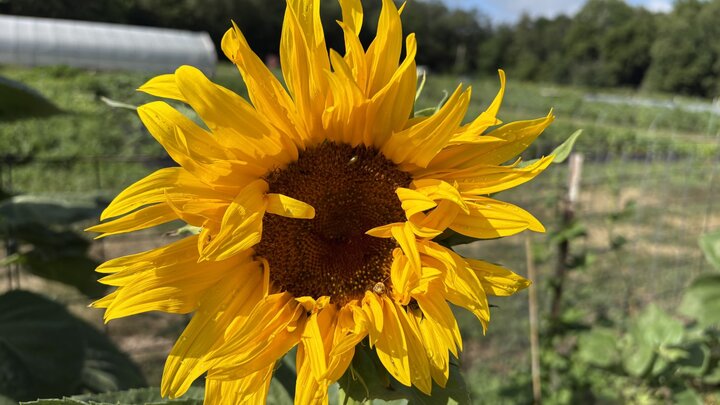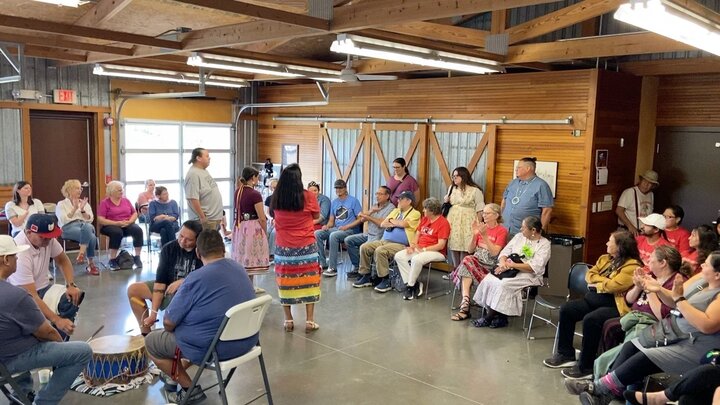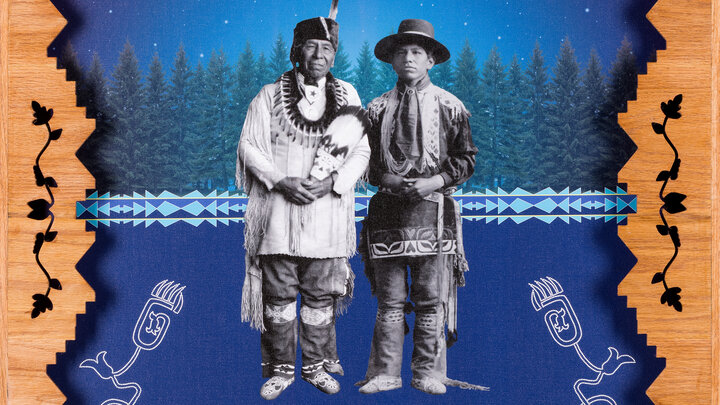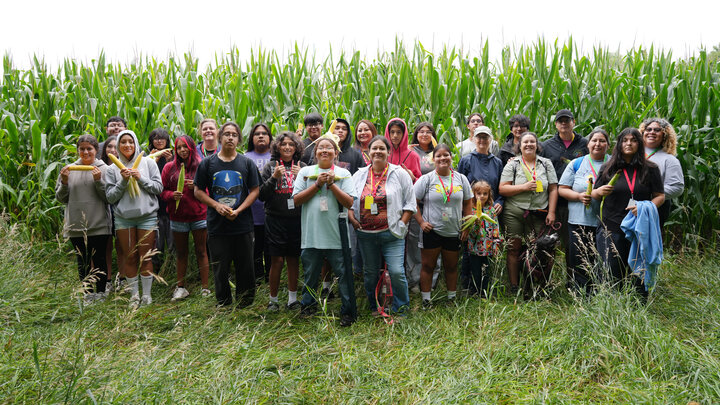The Center for Great Plains Studies and the Otoe-Missouria Tribe of Oklahoma are growing an Indigenous garden as part of the Walking in the Footsteps of our Ancestors project, a joint initiative that aims to promote healing and reconciliation in southeast Nebraska by reconnecting the Otoe-Missouria to their homelands and educating non-Native people about the history and ongoing presence of the Tribe and other Indigenous peoples in our region.
The project is growing traditional crops, as well as ceremonial and medicinal plants, in a 1/8-acre garden for the next two years in partnership with Community Crops at Prairie Pines Nature Preserve in Lincoln. Community volunteer Tom Lynch, Professor Emeritus of English is leading the project on the Lincoln side, while Otoe-Missouria project Co-Director Christina Goodson and Cory DeRoin are providing guidance.
Sarah (Grace) Hudson and George Kihega Garden Update from Prof. Tom Lynch:
We recently finished planting the last of the crops in our garden. This weekend we planted some final beans and squash into areas that were vacant.
The garden has seen a variety of weather challenges. We had three continuously hot and very, very windy days. We feared the garden would be blasted, but it came through fine. We may have lost one bean plant. Since then, we have had plenty of rain, which has been great, but it also provoked a major growth of pasture grasses throughout the garden. We did not see that coming, and have worked to keep it at bay with mowing and mulching. Many of the other gardeners at the Community Crops location have had similar trouble with it.
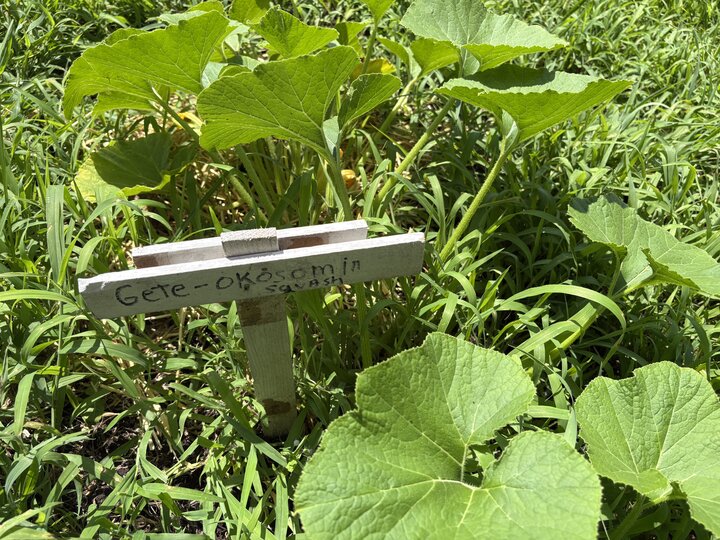
Most of the plants we put in earlier in the season are doing very well. We’ve had the best luck with the Arikara sunflowers, the beans, the sunchokes, the various squash, and the Art Combe’s watermelons.
Some of the sunflowers are about to bloom. The others are growing well, 4-6 feet high. A few of the sunflower leaves are being munched by caterpillars, but we are pretty sure these are Painted Lady butterflies, so no worry.
We have a wide variety of beans--Nebraska beauty, red valentine, Hidatsa red, Arikara red and some recently planted Arikara yellow--and for the most part they are doing great. The Nebraska beauty pole beans have already raced up the recently installed trellis fence, and we may have to raise it.
We planted four varieties of squash: Hidatsa, Lakota, Gete-Okosomin, as well as an acorn variety that we just planted to fill an empty space. All the ones we planted in the spring are growing and blooming with their lovely big yellow blossoms. It’s great to see the bees tumbling around inside. And the Hidatsa has already produced several nice large squash.
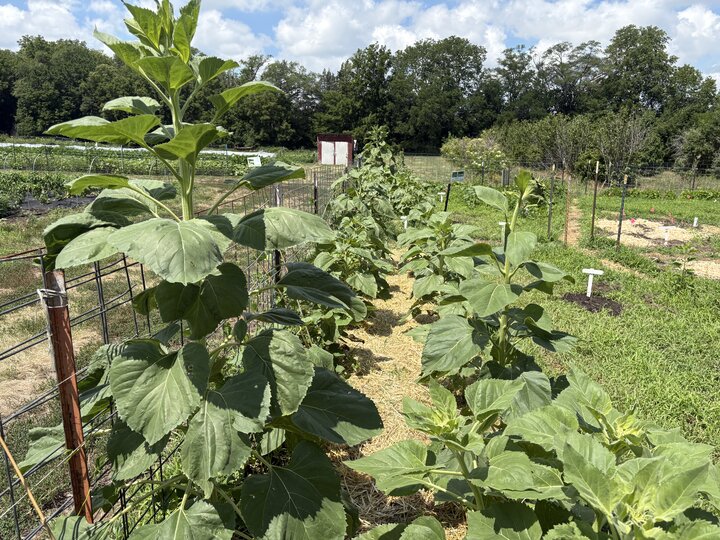
We have a circle of sunchokes around the garden, several dozen, and most are growing well, at least knee high, many taller. They should look lovely when they bloom.
The tobacco has been less successful. Most seems to have been overwhelmed by the grass. But we do have one small patch that is growing and getting taller. We are proud of it and will tend it carefully. More may emerge later, and we’ll keep an eye out.
The prairie turnips and the small patch of sweetgrass remain a mystery. They are probably keeping their heads down among the grass, and growing downward to establish roots. We will continue to monitor both of them. It seems likely the sweetgrass should have been planted from starts rather than seeds. Lesson learned.
For the most part, the native wildflowers and grasses have been a bust. In some sections, we’ve replaced them with beans. In other sections, it’s wait and see. We do have quite a few native milkweeds sprouting around the garden, which we are trying to maintain.
All in all it’s been a successful few months at the garden. We’ve had weekly gatherings of volunteers, and some of us have been out there more or less daily. We’ve come a long way from that chilly, rainy day in April when we had the blessing. It’s an entirely different world there now.
We’re grateful for Community Crops for providing the space. And it’s been nice to have nearby garden neighbors. Most are refugees from places like Iraq, Syria, and Cameroon. Some are amazingly skilled gardeners. We’ve gotten to know many of them. Because they are themselves displaced people, they are very interested in the story of the Otoe-Missouria, whose story they can relate to.
And of course thanks to all the volunteers who have been helping. It’s a big garden--1/8 of an acre--with a lot of moving parts. And it takes many hands to keep it healthy and growing. We’ll continue to have our weekly work parties. On into the heart of the summer.
